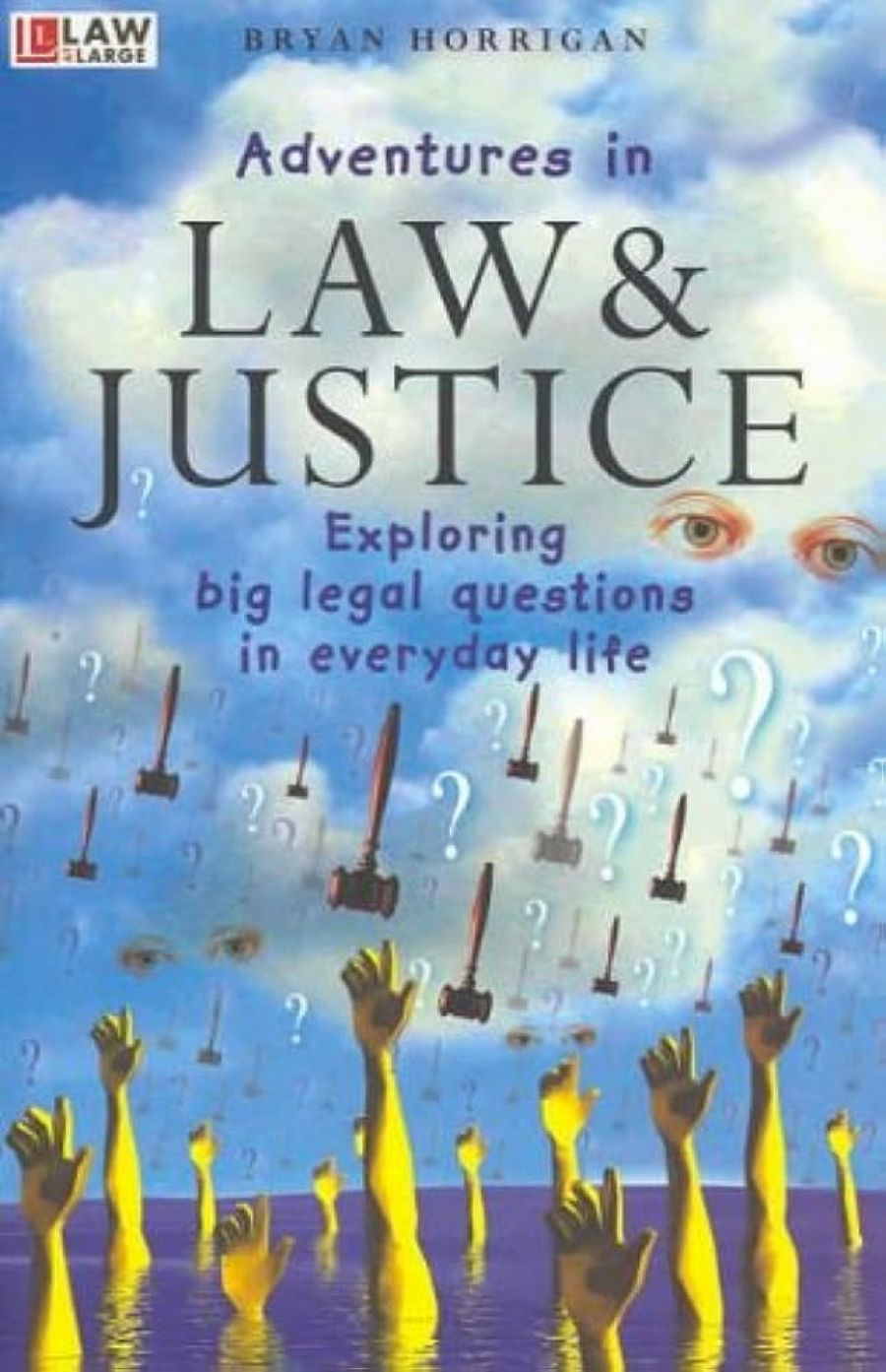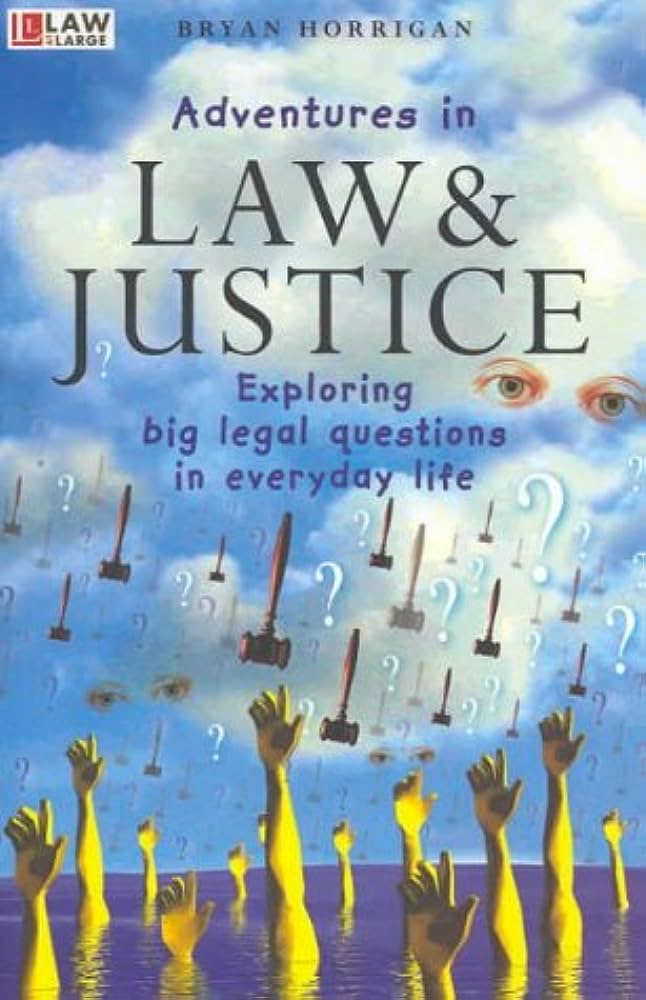
- Free Article: No
- Contents Category: Law
- Review Article: Yes
- Article Title: A Closer Look
- Online Only: No
- Custom Highlight Text:
It is comforting to think that the foundations of the legal system are sound. Perhaps this explains why there are so many common myths about the law, such as the notion that every legal problem has a ready solution, or that the law is essentially objective and value-neutral.
As students, litigants, witnesses and others who have suddenly become more familiar with the system of justice can attest, a closer look at the structure is usually disconcerting. This book, written by a professor of law, will be a revelation to those yet to become familiar with the cracks in the structure. It examines the fundamental concepts and assumptions that underlie law, taking nothing for granted. In the process, it explodes most of the myths.
- Book 1 Title: Adventures in Law and Justice
- Book 1 Subtitle: Exploring big legal questions in everyday life
- Book 1 Biblio: UNSW Press, $39.95 pb, 376 pp
- Book 1 Cover Small (400 x 600):

- Book 1 Cover (800 x 1200):

The author’s focus is not on what the law is but rather on why it is the way it is. He has an obvious strength in legal philosophy and jurisprudence, and draws extensively on these disciplines to analyse recent developments in Australian law. While the approach is theoretical and discursive, the presentation is direct and accessible. All of the discussions are accurate, well researched and provocative. Horrigan is not afraid to ask tough questions, and is careful to argue both sides of a controversy with equal force.
Horrigan’s aim was to write ‘a wide-ranging book about the ideas and ideals of law in our lives’ that would ‘help to enhance citizenship, civic education, and public understanding of law and justice’. The first part of the book, ‘Our Heritage’, lays the groundwork with a number of general reflections about the nature and theory of law. The later chapters focus more closely on particular areas of the law, such as indigenous land rights, abortion, euthanasia, stem cell research and the expanding ‘wrongful birth’ area of litigation (for instance, where medical staff are sued for a botched sterilisation operation that has resulted in an unplanned child).
Further sections deal with the law of relationships, ‘sexually transmitted debt’ and the recent debate over access to in-vitro fertilisation services by lesbian women. There is a welcome summary of native title law since the Mabo case, and the author makes some interesting predictions about future developments in this contentious area. He foresees that the next decade of litigation will focus more closely on the issue of compensation for extinguished native title. The issue of a bill of rights for Australia also gets its own chapter.
Horrigan ends with reflections on Australia’s policies on asylum seekers and on the most recent war in Iraq. Outlining the efforts both within Australia and abroad to counter perceived terrorist threats (including the recent ASIO legislation), he raises the question of how much freedom we must sacrifice for the sake of ‘freedom’.
The overall impression is of solid and principled scholarship. Unfortunately, the editing of the text does not do the work justice: I counted half a dozen basic typographical errors, which seems excessive for a publication of this standard.
The author contends that there is a ‘need for better public legal literacy’ and that ‘much popular and professional understanding of law is critically flawed’. While critical of some presentations of legal news and debate, the author does implicitly accept the importance that the Australian media has had over the last ten years in the dissemination of law and justice issues. Of further relevance is the significant (though less well recognised) influence that popular television programmes such as MDA, Law and Order and The Practice have on public perceptions about law. If, in spite of all this discourse, there remains a lack of public engagement with legal issues, then arguably we should be looking to our legal and political institutions for further guidance.
The ambit of Adventures in Law and Justice does not extend to discussion of some other important issues such as access to justice or the availability of legal aid. Nevertheless, the author might have delved deeper into some areas, notably criminal law. The book would have benefited from the addition of a discussion on sentencing, if only because this issue remains highly contentious within the community. A comparison of the theoretical assumptions behind imprisonment with the modern realities of high recidivism and the increasing economic cost would have been very valuable, especially since ‘law and order’ debates are frequently oversimplified by the political process.
The book is at its best when it discusses the people behind the cases, such as nineteen-year-old Tony Bland, who, as a result of injuries suffered in the Hillsborough soccer stadium disaster in England in 1989, entered a permanent vegetative state. His family, facing the reality that Tony would never recover, made the agonising decision to end Tony’s life, but the hospital authority needed the permission of the courts. Nearly four years later, that permission finally arrived in the form of a landmark decision by the House of Lords. Such cases remind us that, for all its intellectual and theoretical importance, the law is ultimately practical - and some-times excruciatingly personal – in its effects.
Horrigan’s book succeeds in its aims and deserves serious consideration. It is the publisher’s first in a planned series of titles on law in society. If the subsequent titles are of a similar standard, then there is no doubt that the series will make a valuable contribution to public understanding about law.


Comments powered by CComment